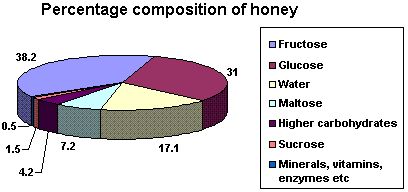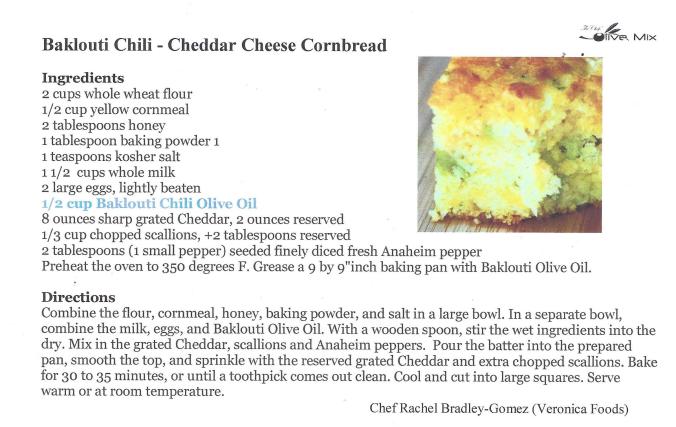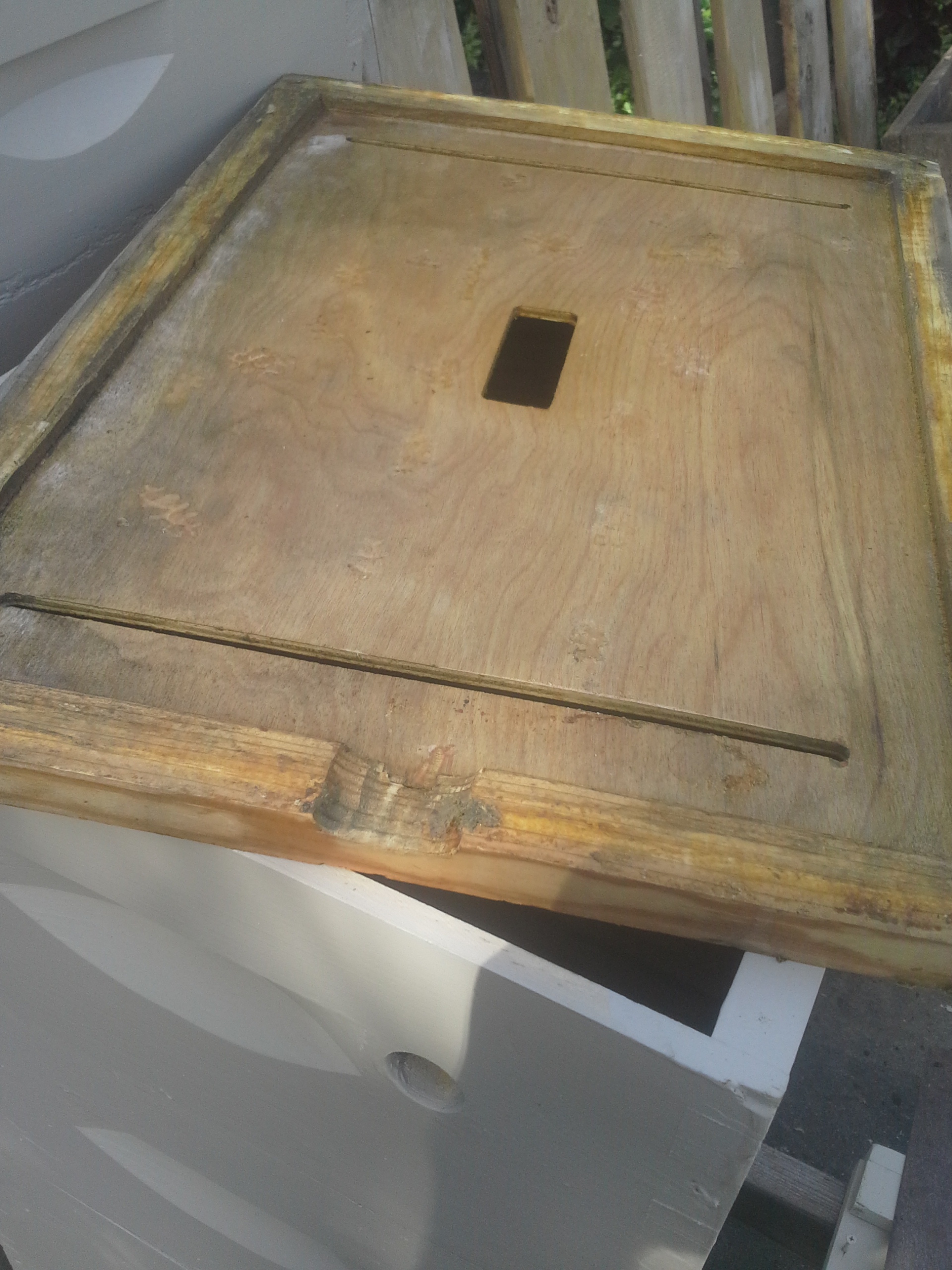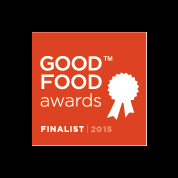There is nothing like beautiful, clear glass to show off your honey! With a combination of grace and elegance, our timeless Hex Glass Jars are sure to be a “crowd pleaser” ! We use ARDE…
Custom Hex Glass Jar Pricing / Case 2016
There is nothing like beautiful, clear glass to show off your honey! With a combination of grace and elegance, our timeless Hex Glass Jars are sure to be a “crowd pleaser” !
We use URBAN FUSION Honey to fill each bottle with care , just the way the bees intended.


CN-266 24 pack 3 oz (85.04 g) Hex Jar
$45/case
CN-267 12 pack 6 oz (170.09 g) Hex Jar
$45/case
CN-268 12 pack 9 oz (255.14 g) Hex Jar
$65/case
CN-269 12 pack 12 oz (340.19 g) Hex or


Skep Jar $85/case
CN-141 12 pack 14 oz (340.19 g) Glass Bear
$98/case
By Debbie Arrington darrington@sacbee.com “”It’s time to savor the sweet life.”” “”As part of Rosh Hashanah celebrations marking the Jewish New Year, slices of apple are dipped in honey. It’s an ancient custom symbolizing good wishes for a sweet new year. “It’s such a natural thing to want to do,” said Amina Harris, director of […]
via “Adding notes of flavor, honey sweetens new year” — 2beeyoung
“Adding notes of flavor, honey sweetens new year” …
“”It’s Time to savor the sweet life.””
By Debbie Arrington
darrington@sacbee.com
“”As part of Rosh Hashanah celebrations marking the Jewish New Year, slices of apple are dipped in honey. It’s an ancient custom symbolizing good wishes for a sweet new year.
“It’s such a natural thing to want to do,” said Amina Harris, director of the UC Davis Honey and Pollination Center. “It makes celebration easy. Kids love it. Why not make a mess of your tabletop? Have fun.”
Celebrated over two days, the holiday begins at sundown Sunday, Oct. 2. Special dinners also feature such traditional favorites as honey challah bread – baked into a spiral turban or crown instead of braids – or tayglach, crunchy bits of dough boiled in honey. Apples and honey also flavor other holiday dishes.
But which honey tastes best? That’s where the sweet life gets a little complicated.
“There are about 300 varietals of honey produced in the United States, but we don’t produce enough of each on a regular basis,” Harris said. “Some years you’ll be able to find your favorites, other times you won’t. Arguably, there are about 50 to 60 commercially available on a consistent basis.”
For example, star thistle – a longtime California favorite – is in dwindling supply due to the eradication efforts of this invasive plant, she said.
“What we’re seeing is change happening,” Harris said. “Star thistle – bad plant, wonderful honey – has become so rare at this point. But growing in popularity up and down the West Coast is meadowfoam (honey). It tastes like marshmallow with a real vanilla hit.”
An itty-bitty white flower that grows close to the ground, meadowfoam is native to southern Oregon and Northern California.
“It looks like white foam in a meadow; that’s how it got its name,” Harris said. “It’s now being cultivated for its seed; the oil is used in cosmetics.”
Each honey has a distinct taste, thanks to the flowers that provided its nectar. The most popular honeys are old favorites: clover, orange blossom and wildflower. That last category is extremely broad, Harris noted. Thousands of varieties of native plants grow in North America and their nectars can taste wildly different. Even if the honey is from one wildflower area (such as the Sacramento Valley), bees must visit 2 million flowers to make one pound of honey.
“It’s not all one (kind of) wildflower,” she said.
Generally, honeys lighter in color have a more delicate flavor, while darker honeys taste more robust.
A recent tasting illustrated that wide spectrum of honey flavors. Judges for the annual Good Food Awards, which honor craft food producers nationwide, gathered in San Francisco to evaluate 105 honeys. (This reporter was among the honey tasters. Winners will be announced in January.)
Using the Honey Flavor and Aroma Wheel developed at UC Davis, the judges quickly discovered that honey doesn’t always taste like honey. It can be floral, fruity, woody, spicy, nutty or earthy.
Wildflower honeys typically smell spicy like cloves. Others have strong hints of vanilla or menthol. Some smell smoky or yeasty – not necessarily good signs.
Like wine, some flavors will be overt while others are more subtle. Some honeys have a distinct aftertaste. For example, buckwheat has a lingering malty flavor; eucalyptus’ aftertaste is often medicinal.
Most honeys crystallize, Harris said. That’s OK. Warm the honey up (zapping it briefly in the microwave works), and it will dissolve again.
“Honey is a super-saturated sugar,” Harris explained. “That’s why it crystallizes.”
Those crystals tend to form around tiny natural impurities in the honey such as specks of pollen, she noted. Many commercial honeys are filtered to remove those particles and keep the honey liquid.
Harris prefers specific honeys for different uses.
“Blackberry honey is actually excellent for cooking. It has a wonderful berry flavor,” Harris said. “I love cheesecake with a good orange blossom honey. The whole house smells like orange blossoms while it bakes. Sweet clover goes great in shortbread. It has a buttery cinnamon note. I love lehua (a Hawaiian honey) in coffee. The complexity of the honey marries well with coffee.”
Coriander, a savory honey, is wonderful on ricotta cheese, she said. She uses Christmasberry honey in custard to give it a butterscotch note.
For Rosh Hashanah, Harris usually bakes a honey cake with apple topping. “It’s not your usual honey cake, but light and delicious.”
She also puts out an assortment of apple varieties and different honeys so guests can mix and match.
“It’s a fun thing to do,” Harris said. “You’re having your own mixed apple and honey tasting.”
Debbie Arrington: 916-321-1075, @debarrington
Honey resources
Get a Honey Wheel: Learn to describe how honey tastes and to distinguish between varietals with the help of this handy tool. The UC Davis Honey and Pollination Center Honey Flavor and Aroma Wheel is available to the public for $12.50 at the UC Davis bookstore. Proceeds help the center continue its work and help fund the campus’s Harry H. Laidlaw Bee Biology Laboratory. To order online: honey.ucdavis.edu/products.
Find your favorites: The National Honey Board offers an online honey locator, listing suppliers so consumers can buy direct. You can search by state (45 suppliers in California) or nectar source (such as orange blossom). Find it at http://www.honey.com/honey-locator.
▪ For more recipes and tips, click on http://www.honey.com.
Honey challah
Makes 1 loaf (about 16 large slices)
This classic bread is a mainstay for Jewish holiday celebrations. For Rosh Hashanah, the challah is often baked into a turban or spiral shape, symbolizing one year coming to a close and another beginning.
Adapted from the National Honey Board’s recipe.
1 package (1/4 ounce) active dry yeast
1 1/4 cups warm water, divided
5 1/2 cups all-purpose flour
2 teaspoons salt
1/2 cup honey 
ARDEN HILLS GOLD Honey
2 eggs
1/4 cup butter or margarine, melted
1 egg yolk
In small bowl, combine yeast and 1/4 cup warm water. Let stand 10 minutes, until yeast bubbles and doubles in volume.
In large mixing bowl, combine flour and salt; add honey, eggs and margarine or butter. Add proofed yeast and mix until well combined.
Turn dough onto lightly floured work surface; knead until dough is smooth and elastic. Place dough in lightly greased bowl. Cover with a towel and let rise in warm, draft-free place until doubled in bulk.
Punch down dough; cover and let rise again until doubled in bulk. Punch down dough once more and form into a ball.
On a lightly floured board with floured fingers, stretch the ball into one 2-foot-long strand, about 2 to 3 inches thick, rolling gently with your palms to keep it even. Taper both ends to a point, rolling the dough between your palms. Roll one end of the strand inward to create a spiral. Keep rolling in the same direction until the spiral is complete. Tuck the end under the loaf and pinch it tightly to the bottom to secure.
Place spiral on lightly greased baking sheet. Mix egg yolk with 1 tablespoon water. Brush over formed challah. Let rise until almost doubled in size. Bake at 350 degrees for 35 to 40 minutes until golden brown. The loaf will sound hollow when underside is tapped.
Remove from oven and cool before slicing.
Yummy honey cake
Serves 8
This is Amina Harris’ New Year’s honey cake recipe.
1/2 cup honey 
ARDEN HILLS GOLD Honey
1/3 cup melted butter or margarine
2 eggs
1/4 cup sour cream or plain yogurt
1 teaspoon vanilla
1 1/2 cups unbleached flour
1 teaspoon baking powder
1/2 teaspoon baking soda
1/2 teaspoon salt
1/2 cup chopped walnuts or pecans
For topping:
2 cups sliced apples
2 tablespoons butter or margarine
1 tablespoon lemon juice
Cinnamon
Preheat oven to 350 degrees.
Cream together honey and butter. Add eggs one at a time. Stir in vanilla and sour cream or yogurt.
Sift together all dry ingredients. Add the flour mixture to the honey mixture in three parts. Stir the batter after each addition until silky smooth.
Fold in nuts. Pour batter into greased 9-inch cake pan or 9-inch square baking dish. Bake at 350 degrees for about 30 minutes or until a toothpick inserted near the center comes out clean.
Meanwhile, make topping. Sauté apples in butter or margarine. Add lemon juice and cinnamon to taste. Cook until the apples are soft. Remove from heat and add honey. Stir well.
Serve cake with warm apple topping spooned over each slice.
Classic baklava
Makes 24 pieces
This classic Mediterranean confection is a wonderful showcase for flavorful honey.
Recipe adapted from National Honey Board/
1/2 pound sheets filo (phyllo) dough, frozen
For syrup:
1/4 cup sugar
1/4 cup water
1 cup honey 
ARDEN HILLS GOLD Honey
1 tablespoon rose water
2 cups blanched almonds, ground
3/4 cup sugar
1 teaspoon lemon rind, grated
3/4 teaspoon cinnamon, ground
1 cup unsalted butter, melted
Almonds, sliced, for garnish
Thaw filo dough for 8 hours in refrigerator, if frozen.
Make syrup: Combine 1/4 cup sugar and the water in a 1 1/2-quart saucepan; bring to a boil, stirring. Mix in honey and cook until syrup boils again. Remove from heat; mix in rose water.
Unfold sheets of filo dough so they lie flat. Cover with waxed paper, then a damp towel, to prevent them from drying out.
Preheat oven to 325 degrees. In a medium bowl, combine almonds, sugar, lemon rind and cinnamon. Generously butter an 8- to 9-inch-square pan.
Carefully fold 2 sheets of filo to fit pan; place in pan one at a time, brushing each with butter. Sprinkle about 3 tablespoons of the almond mixture over top sheet. Fold 1 sheet of filo to fit pan; brush with butter. Sprinkle evenly with another 3 tablespoons almond mixture.
Continue to add layers, using 1 folded sheet of filo, a generous brushing of butter, and 3 to 4 tablespoons almond mixture for each, until nut mixture is used up (there should be about 10 nut-filled layers).
Fold remaining 2 to 3 sheets of filo to fit pan. Place on top, brushing each, with butter before adding the next. With a very sharp knife, carefully cut diagonally across pan to make small diamond shapes – about 1 1/2 inches on a side – cutting all the way to bottom of pan. Pour on any remaining butter.
Bake until golden brown (about 45 minutes). Pour warm honey and rose water syrup over top. Decorate each piece with an almond slice. Cool before serving.
Baklava cookie cups
Makes 24 cookie cups
Recipe adapted from National Honey Board.
For the cookie:
2 cups unbleached all-purpose flour
1 teaspoon orange zest
1/2 teaspoon ground cardamom
1/4 teaspoon salt
1 cup unsalted butter, room temperature
3/4 cup honey 
ARDEN HILLS GOLD Honey
2 large eggs, room temperature
1 teaspoon pure vanilla extract
For the filling and syrup:
1/2 cup pistachios, chopped
1/2 cup honey
3 tablespoons water
2 teaspoon orange juice
4 green cardamom pods, crushed
1 cinnamon stick
Heat oven to 350 degrees and grease a 24-cup mini muffin tin.
In a medium mixing bowl, combine the flour, orange zest, cardamom and salt.
In the bowl of a stand mixer with the paddle attachment, cream the butter and honey for about 1 to 2 minutes. The mix will look a little curdled at this point and that’s fine; scrape down the sides.
Beat in the eggs, then the vanilla. Mix in the flour in two parts.
Using a cookie scoop, scoop the dough into the prepared muffin tin and bake for 10 minutes.
Remove from the oven, let sit for about 3 to 4 minutes before using a wooden dowel or the end of a wooden spoon to carefully press down in the center of each cookie to make a well.
Let the cookies cool for about 15 minutes in the tin before removing to a cooling rack to cool completely.
Once the cookies are cool, prepare the syrup. In a small saucepan over medium heat, combine the honey, water, orange juice, cardamom pods and cinnamon stick. Bring to a simmer and remove from the heat.
Drizzle a small amount in the bottom of each cookie cup and then fill with the chopped pistachios. Drizzle more syrup on top of the filled cookie cups. (If you have any syrup remaining, save for another use.)
Serve immediately or store in an airtight container for up to 1 week.
Honey and blackberry cheesecake with gingersnap crust
Serves 8
Cheesecake lets honey flavors shine through. Try this recipe with blackberry honey for a double dose of berry flavor.
Recipe adapted from National Honey Board.
For crust:
2 cups (about one 8-ounce package) crushed gingersnaps
¼ cup melted butter
For filling:
1½ pounds (three 8-ounce packages) cream cheese, softened
¾ cup honey 
ARDEN HILLS GOLD Honey
⅓ cup heavy cream
1 tablespoon vanilla
1 tablespoon gluten-free all-purpose flour
⅛ teaspoon salt
4 large eggs
1 pint fresh blackberries
Garnish (optional):
1 pint fresh blackberries
Honey
Preheat oven to 350 degrees.
Combine crushed gingersnaps and butter in a medium bowl. Transfer mixture to a 9-inch springform pan. Stick your hand in a sandwich bag and firmly press the mixture into the bottom of the pan to form a crust. Bake at 350 degrees for 8 minutes. Remove from oven, reduce heat to 300 degrees and allow crust to rest.
Meanwhile, beat cream cheese at medium speed of a stand mixer for 3 to 4 minutes. Add honey, cream, vanilla, flour and salt. Beat until mixed. Add eggs, one at a time, beating between each addition. Beat mixture until just combined.
Pour cream cheese mixture into prepared crust. Drop blackberries on top of mixture. Bake at 300 degrees for 65 minutes. Turn off oven and leave cake in oven for an additional 1 hour. Remove and allow to cool. Run a knife around sides of cheesecake. Cover and chill overnight. Remove sides from pan.
Serve with additional berries and drizzles with honey, if desired.
Butternut and apples with ARDEN HILLS GOLD Honey
“This is a great place to show off your most fragrant, interesting honey varieties,” said cookbook author Marie Simmons. “I love it with sage, rosemary, or oregano honey, but star thistle, wildflower, and many others will come through loud and clear as well.”
Recipe from “Taste of Honey” by Marie Simmons (McMeel Publishing); courtesy the National Honey Board.
One (1½ to 2 pounds) butternut squash, halved, seeded, and cut into 2- or 3-inch chunks””
Amina Harris, UC Davis’ Honey & Pollination Center director, uses a honey flavor wheel to show how to get the most out of the sticky, sweet treat. Debbie Arrington The Sacramento Bee
Healing properties continued…
“”The healing properties of honey were demonstrated in a study comparing honey treatment to that of silver sulfadiazine, the standard treatment, for burn victims. The results show that honey treatments result in a much greater sterility of the wounds, a faster rate of healing, and a faster onset of healing. These experiments not only showed that honey is superior to standard treatments, but also better than artificial honey made from the sugars, but omitting the glucose oxidase, hydrogen peroxide, flavonoids, and other minor components of honey.
Carbohydrates
Unsurprisingly, these comprise the major portion of honey – about 82%. The carbohydrates present are the monosaccharides fructose (38.2%) and glucose (31%); and disaccharides (~9%) sucrose, maltose, isomaltose, maltulose, turanose and kojibiose. There are also some oligosaccharides present (4.2%), including erlose, theanderose and panose, formed from incomplete breakdown of the higher saccharides present in nectar and honeydew.
Proteins and Amino Acids
Honey contains a number of enzymes, including invertase, which converts sucrose to glucose and fructose; amylase, which breaks starch down into smaller units; glucose oxidase, which converts glucose to gluconolactone, which in turn yields gluconic acid and hydrogen peroxide; catalase, which breaks down the peroxide formed by glucose oxidase to water and oxygen; and acid phosphorylase, which removes inorganic phosphate from organic phosphates.
Honey also contains eighteen free amino acids, of which the most abundant is proline.
Vitamins, Minerals and Antioxidants
Honey contains trace amounts of the B vitamins riboflavin, niacin, folic acid, pantothenic acid and vitamin B6. It also contains ascorbic acid (vitamin C), and the minerals calcium, iron, zinc, potassium, phosphorous, magnesium, selenium, chromium and manganese.
The main group of antioxidants in honey are the flavonoids, of which one, pinocembrin, is unique to honey and bee propolis. Ascorbic acid, catalase and selenium are also antioxidants. Generally speaking, the darker the honey, the greater its antioxidising properties.
Other compounds
Honey also contains organic acids such as acetic, butanoic, formic, citric, succinic, lactic, malic, pyroglutamic and gluconic acids, and a number of aromatic acids. The main acid present is gluconic acid, formed in the breakdown of glucose by glucose oxidase. Honey also contains hydroxymethylfurfural, a natural product of the breakdown of simple sugars below pH 5.””

Honey , the complete food …
The Benefits of Honey are astounding!!
To buy the latest version of The Honey Revolution
Click Here http://store.beeculture.com/the-new-honey-revolution/
…

ARDEN HILLS GOLD & Olive Oil???
“”With the help of 20 years’ worth of research and thousands of prehistoric shards of pottery, a large group of scientists have presented evidence that the deep relationship between humans and honeybees is far older than we thought — giving us just one more reason to care about the conservation of a species that we’ve relied on for thousands of years.”
Honeybees are a cornerstone of modern agriculture, valued both for their importance as pollinators and for the honey and wax they produce.””
Today, they’re considered the only domesticated insect, commonly kept by humans in managed hives — but it wasn’t always this way. Like all domesticated creatures, honeybees started out as wild animals.

“Researcher finds evidences of Honeybee farming from Stone Age” – Peoria Daily Science
The Ventilated Gabled Cover and / or Vestibule Box
 Ventilated gabled cover or “vestibule box” with slotted inner cover is one piece of beekeeping equipment over looked and is needed to effectively deal with excessive moisture found in more temperate climates. Warm air holds moisture, and the warmer the air, the more moisture it can hold. Since a beehive is loaded with moisture from both bee respiration or drying nectar, the hive can quickly become a damp, mold-infested environment that is not healthy for bees.
Ventilated gabled cover or “vestibule box” with slotted inner cover is one piece of beekeeping equipment over looked and is needed to effectively deal with excessive moisture found in more temperate climates. Warm air holds moisture, and the warmer the air, the more moisture it can hold. Since a beehive is loaded with moisture from both bee respiration or drying nectar, the hive can quickly become a damp, mold-infested environment that is not healthy for bees.
Winter is particularly problematic in a cold hive where the bees’ activity warms the air immediately around the cluster. This warmer air rises until it reaches the cold inner cover where the moisture condenses, often dripping back down on the bees. In either case—winter or summer—the faster you can get rid of moist air, the better.
The ventilated gabled roofs or vestibule boxes with slotted inner cover provides a double whammy to moisture-laden air. First, the ventilated space provides a place for this air to collect that is well above the supers. Secondly, the vented space gives the air a way to escape. The extra height provided by the gable or vestibule is important because the greater the distance between the inlet and the outlet, the better the draft.
You can forget about follower boards for ventilation unless the hive cluster needs to be reduced. If you need additional ventilation during the summer months just stagger back the supers as per our cover picture. You get better ventilation, a second defensible entry for busy foragers, and you have one less piece of non-productive equipment in your hive. The vestibule box also becomes a “capping s’ feeding station” after you have extracted the surplus honey supers.
The other benefit of the slotted inner cover, in of itself , is you can use the slots to “peek” into your hive on those days when everyone tells you “your bees will turn to stone” if you observe your bees after “Labor Day and before Valentines Day”… white pants and formal attire not required.

The ‘BEE”…an Ancient History & Legacy @
“Since at least the times when humans scratched on rocks to create images, the bee and the beehive have played central roles in human spiritual interest and worship. Bees and honey are present in the creation myths, cosmologies and sacred places of many diverse ancient cultures. African, Australian, South American, European, and Hindu-Indian creation myths and sacred stories feature the bee as a symbol of reverence. Archaeological evidence from almost every corner of the world demonstrates this. Bees and the hive life were powerful symbols of community, continuance, regeneration and a connection to the otherworld for our ancestors. As the source of honey, they also represented sweetness, healing and magic.
Many scholars believe early cultures of the Mediterranean region worshiped a mother goddess. These cultures offer us our earliest archaeological evidence of organized apiculture centers. Central religious themes of these regions often depict the bull, the bee and goddess imagery. This triad of themes is believed to have centered around concepts of birth, death and rebirth; the ultimate mysteries of our human lives and those of the natural world around us, regardless of our time in human history. The works of Marija Gimbutas are a rich source for these interpretations.
Minoan culture, of the Neolithic period around Crete, depicted some of it’s many goddess images with bee-like stripes, wings and antennae. Apiculture was a prominent part of the Minoan culture, and bee- hives and other bee images feature prominently in it’s engraved imagery. Later Egyptian, Greek and Roman cultures inherited these patterns and beliefs and transmuted them into their own later myths and legends.
Honey and the bee were also prominent in the cosmology of the early Egyptians. They were principles of the Egyptian diet, medicine and ritual magic. The typical black and gold striping and winged insect imagery seen on many Egyptian god and goddess figures, sarcophagi and other engraved imagery also referenced the bee. The Egyptian Sun God, Ra, cried tears that became bees that then created honey in the world. The Egyptian God, Apis, took the form of a Sacred Bull. The Latin name for our modern day honey-bee is Apis Mellifera. King Menes of Egypt was referred to as ‘The Beekeeper’ and his domain in Lower Egypt was known as the ‘Place of the Bee’. The Great Mother Goddess Neith, was worshiped at Sais and her temple was called ‘The House of the Bee’…cont’d @
[https://www.facebook.com/Merovingians-The-Once-The-Present…/]”

